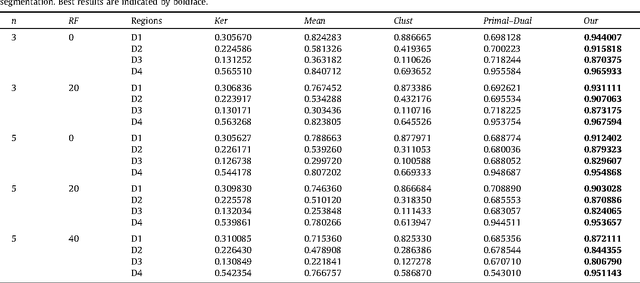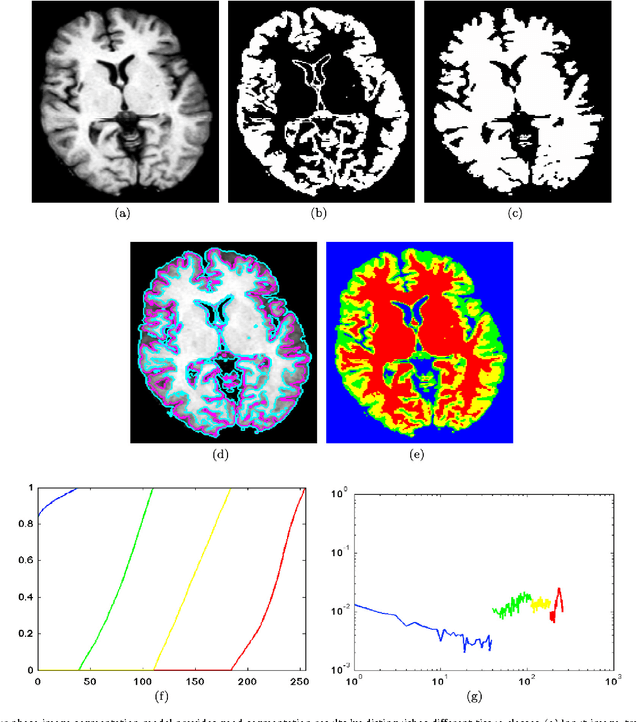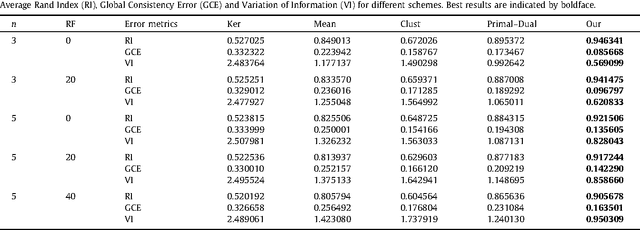K. Palaniappan
Adaptive diffusion constrained total variation scheme with application to `cartoon + texture + edge' image decomposition
May 05, 2015



Abstract:We consider an image decomposition model involving a variational (minimization) problem and an evolutionary partial differential equation (PDE). We utilize a linear inhomogenuous diffusion constrained and weighted total variation (TV) scheme for image adaptive decomposition. An adaptive weight along with TV regularization splits a given image into three components representing the geometrical (cartoon), textural (small scale - microtextures), and edges (big scale - macrotextures). We study the wellposedness of the coupled variational-PDE scheme along with an efficient numerical scheme based on Chambolle's dual minimization method. We provide extensive experimental results in cartoon-texture-edges decomposition, and denoising as well compare with other related variational, coupled anisotropic diffusion PDE based methods.
Brain MRI Segmentation with Fast and Globally Convex Multiphase Active Contours
Aug 28, 2013



Abstract:Multiphase active contour based models are useful in identifying multiple regions with different characteristics such as the mean values of regions. This is relevant in brain magnetic resonance images (MRIs), allowing the differentiation of white matter against gray matter. We consider a well defined globally convex formulation of Vese and Chan multiphase active contour model for segmenting brain MRI images. A well-established theory and an efficient dual minimization scheme are thoroughly described which guarantees optimal solutions and provides stable segmentations. Moreover, under the dual minimization implementation our model perfectly describes disjoint regions by avoiding local minima solutions. Experimental results indicate that the proposed approach provides better accuracy than other related multiphase active contour algorithms even under severe noise, intensity inhomogeneities, and partial volume effects.
Color image denoising by chromatic edges based vector valued diffusion
May 15, 2013



Abstract:In this letter we propose to denoise digital color images via an improved geometric diffusion scheme. By introducing edges detected from all three color channels into the diffusion the proposed scheme avoids color smearing artifacts. Vector valued diffusion is used to control the smoothing and the geometry of color images are taken into consideration. Color edge strength function computed from different planes is introduced and it stops the diffusion spread across chromatic edges. Experimental results indicate that the scheme achieves good denoising with edge preservation when compared to other related schemes.
 Add to Chrome
Add to Chrome Add to Firefox
Add to Firefox Add to Edge
Add to Edge